New Update: Boost Social Proof with Reviews & Automation
New Update: Boost Social Proof with Reviews & Automation

 John Turner
John Turner
 John Turner
John Turner
Trying to grow your business with content but not sure where to start?
That was me, too. I spent months creating blog posts, videos, and emails without a clear plan, and it showed. Once I learned how to develop a content marketing strategy, I started seeing real results: more traffic, better leads, and content that actually converted.
In this guide, I’ll show you exactly how to develop a content marketing strategy step-by-step, using the same approach that helped me stop guessing and start growing.
A content marketing strategy is a process of building an audience by creating and delivering content that turns site visitors into fans, leads, and customers. According to the Content Marketing Institute, 79% of B2B marketers said their organization used content marketing to further their goals.
Without a solid content marketing strategy, your marketing team’s efforts may seem like throwing spaghetti at the wall and seeing what sticks. That’s not a recipe for success.
A well-defined content marketing strategy brings structure and consistency to your efforts. It helps align your content with your business goals, ensuring every piece of content serves a purpose and moves you closer to your objectives. It also allows you to measure performance and adjust your approach based on data rather than guesswork.
Here are a few more reasons for building a content marketing plan:
Now that you know what a content marketing strategy is, let’s go ahead and learn how to develop one.
To create a content strategy for your website, you need to flesh out your reasons for building a plan, what you want to include, and how you’ll carry out your content marketing efforts.
Learning how to develop a content marketing strategy might seem scary at first, but don’t worry. We’ll break each step down so you know how to reach your digital marketing goals.
Let’s dive in!

Writing a mission statement is one of the best ways to stay focused with your content strategy.
Your mission should cover three simple things:
Here’s a quick formula:
“We provide [audience] with [content] to help them [goals].”
Let’s say your audience is small business owners. Your content might include tutorials, templates, or comparisons. And your goal could be helping them get more customers.
That’s what the Awesome Motive mission statement does so well—it defines the audience, the content, and the outcome in one clear sentence.
Now let’s switch gears: What does your business get from content marketing?
Before writing a single blog post, you need to set clear goals. Are you trying to:
Each goal needs a slightly different approach. But they all feed into the bigger picture—growing your business without wasting effort.

Setting goals is great. But unless you measure them, it’s all guesswork.
That’s where KPIs (key performance indicators) come in.
KPIs help you track what’s working and what needs a fix. You’ll want to attach real numbers to each goal, like:
It’s also smart to track costs. Content marketing should be more efficient—not more expensive. You can learn how to calculate content marketing ROI here.
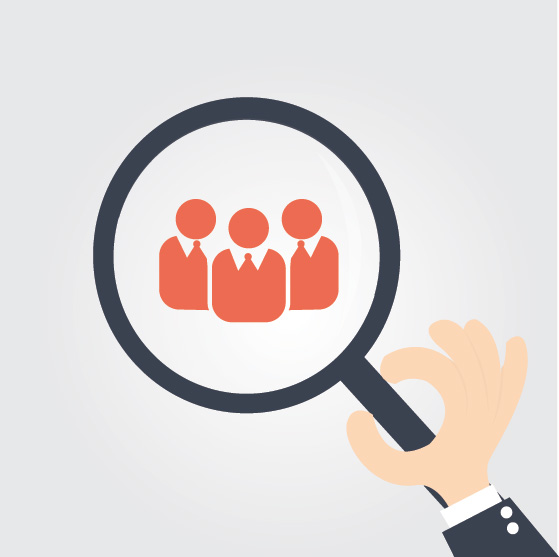
If you don’t know who you’re talking to, your content will miss the mark.
That’s why audience research is step 3.
There are three parts to this process:
Let’s say you notice most of your traffic comes from 30–40 year old freelance designers in the US. Their biggest struggle? Finding paying clients.
With that info, you can focus your blog posts on tools, strategies, and examples that speak directly to them.
Before you create anything new, take stock of what you already have. That might include blog posts, videos, social media content, or even webinars.
Some of that content may already be working. Some of it might need updates—or need to go entirely.
This step includes three parts:
Use a tool like SEMRush to run a content audit. You can choose the blog or section you want to analyze, then click Start Content Audit.

It shows you the title, content length, backlinks, and shares for each post. Export this data to a spreadsheet so you can start reviewing it.
Next, check performance. Which content is ranking, getting clicks, and earning links? Which posts have zero traction?
You can get most of this data directly from SEMRush using their position tracking and site audit tools.

This helps you decide what to keep, what to improve, and what to remove altogether.
Now find the missing pieces. These could be:
To find these gaps, go to the Keyword Gap tool in SEMRush’s Competitive Research Toolkit. Add your site and competitor URLs, then hit Compare.

This shows keyword opportunities you’re missing out on—perfect for planning future content.
Not every platform is worth your time. You need to find where your audience actually engages with your content.
Start by checking your Google Analytics under Acquisition » Social » Overview. You’ll see which networks send you the most traffic.

You can also use BuzzSumo to break down your shares by content type, social network, and length.

With that info, you can focus your promotion on the channels that actually move the needle.
Now it’s time to decide what kind of content you’ll create.
Your blog should be the home base. From there, you can repurpose content into videos, infographics, and social posts.
So what formats work best?
Use BuzzSumo to see what content types already perform well for your audience. Look for total shares by format.

For example, if listicles and how-tos perform best, make those a priority.
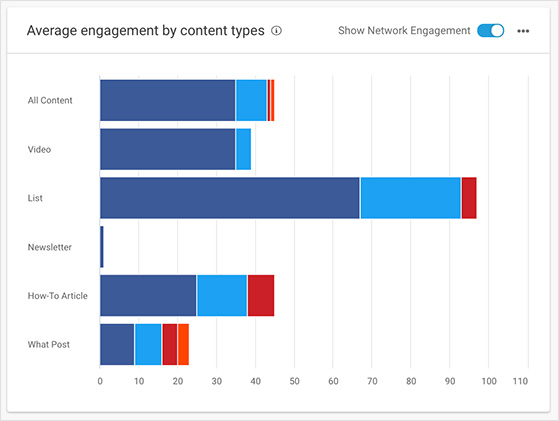
You’ll probably want a mix of:
Pro Tip: Different content types work for different businesses. B2B might focus on white papers and LinkedIn posts, while B2C could lean into short-form videos and listicles.
Once you’ve chosen your formats, it’s time to map out how you’ll actually get them created.
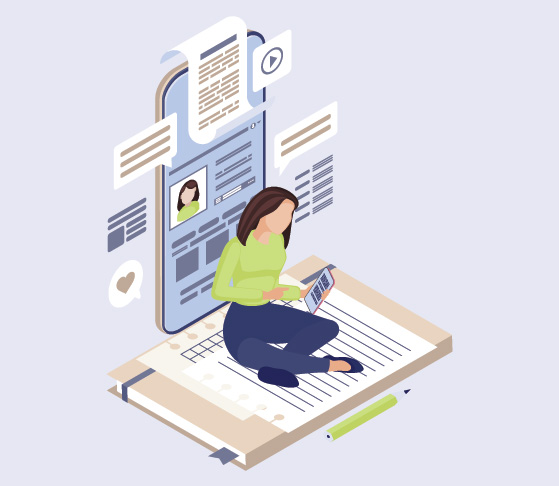
Now that you know what to create, it’s time to figure out how to get it done.
Think of this step as answering the 3 big W’s:
Once your workflow’s in place, the next step is to organize your content plan in a calendar.
Planning ahead keeps your strategy from falling apart. That’s what a content calendar is for.
You can keep it simple with Google Calendar or use a dedicated tool like Asana.
Asana even has a free Editorial Calendar Template that you can customize for your team.
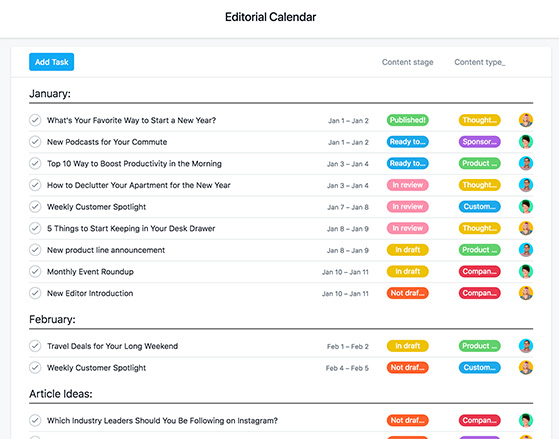
Just map out your post ideas by date, assign responsibilities, and make sure deadlines are clear. That way, everyone knows what’s going out and when.
This is where all your planning comes together—it’s time to start writing, designing, or filming.
If you’ve followed the earlier steps, you already know what topics to cover and which formats work best for your audience.
Start with a title from your content calendar, then research similar posts.
To do this, open a private browser window and search your keywords. Look at the top results and think about what you can do better or explain more clearly.
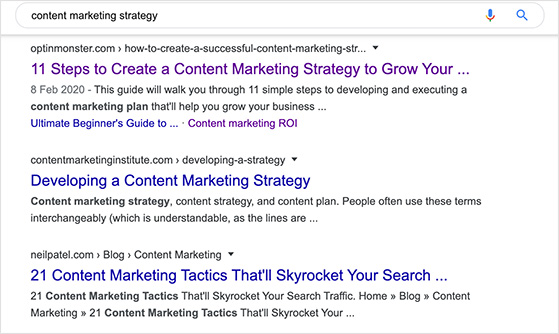
Then scroll to the bottom of the results page and check the suggested searches—these are called LSI (Latent Semantic Indexing) terms. They’re great for finding supporting ideas for your post.

Next, organize your notes into a simple outline. Write your draft with real people in mind—not just search engines. Keep it clear, useful, and easy to skim.
For more help, check out this list of SEO ranking factors to make sure your post is easy to find online.
And remember—always write like you’re talking to a friend. Helpful beats perfect every time.
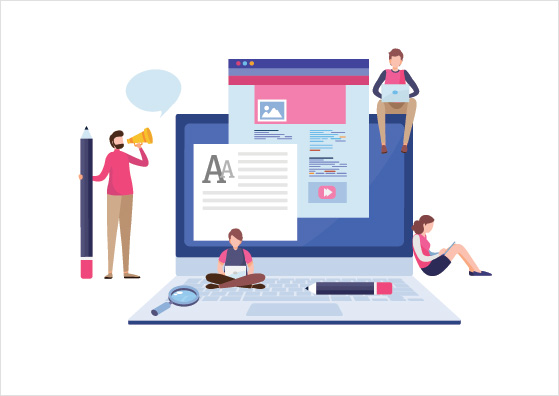
Publishing your content isn’t the end—it’s the start of getting it seen.
Here are simple ways to promote your content effectively:
You can also promote new content with tools like OptinMonster. For example, LeadGuru used it to convert 81% of visitors.
It’s also helpful for showing offers, delivering lead magnets, and reducing bounce rates with features like Exit-Intent®.
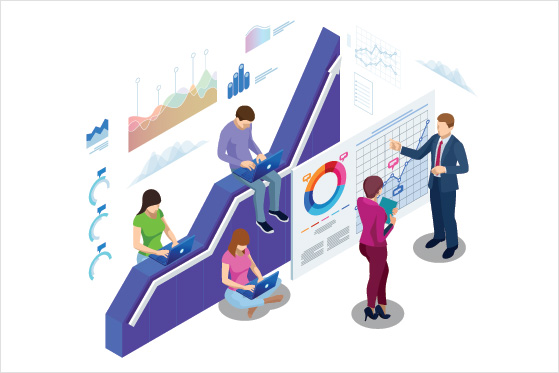
Now it’s time to look back at the KPIs you set in Step 2 and see how your content is performing.
You can use tools like:
Use this data to figure out what’s working and adjust your strategy moving forward.
Quarterly is a good rhythm. It lets you stay on top of changes in your business, audience behavior, or industry trends.
Expect to wait at least 3–6 months to see consistent results. Content marketing is a long-term play.
Start with blog posts, videos, and lead magnets. Add infographics, social content, and long-form guides as you grow.
Be helpful, be specific, and speak directly to your audience’s needs. Strong visuals and personal experience also help.
Go where your audience is. Share on the platforms they use, email your list, and collaborate with trusted voices in your niche.
Check your original goals and KPIs. Look at traffic, leads, social engagement, and conversion data to see what’s working.
And that’s it!
Now you know how to develop a content marketing strategy that helps you reach the right people and grow your business in a sustainable way.
Want to keep growing? Learn how to create a retargeting strategy to bring visitors back and turn them into customers.
Don’t forget to follow us on YouTube, Twitter, and Facebook for more great tips to grow your business.
Disclosure: Our content is reader-supported. This means if you click on some of our links, then we may earn a commission. We only recommend products that we believe will add value to our readers.
Copyright © 2024 SeedProd LLC. RafflePress® is a registered trademark of SeedProd LLC